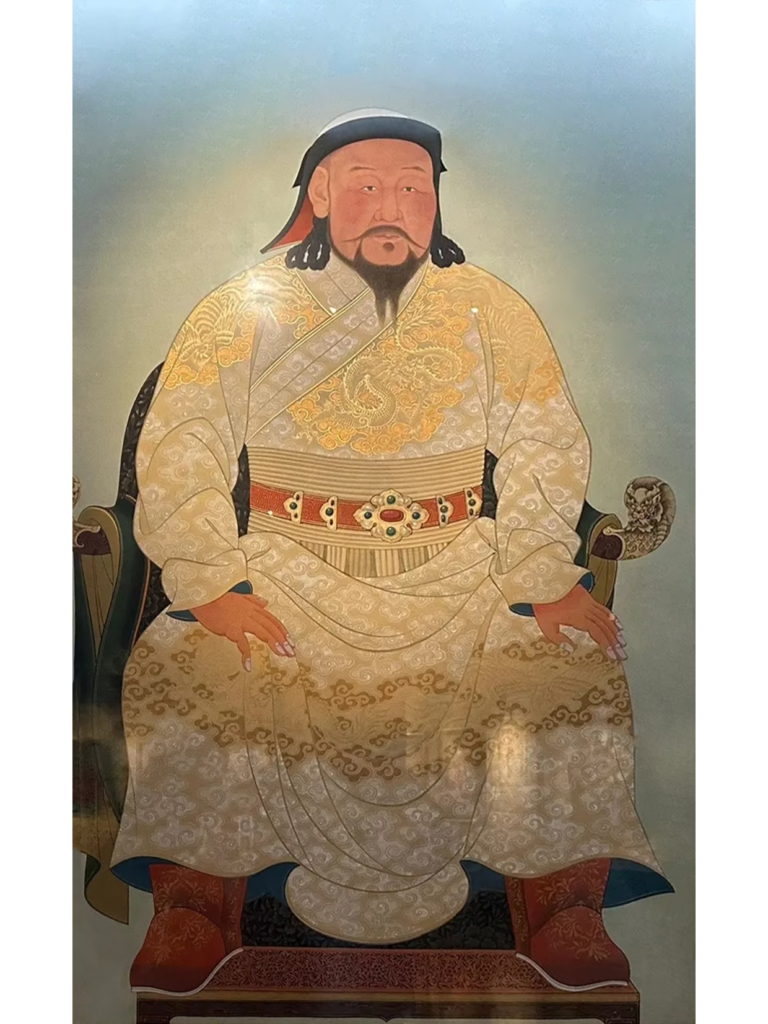The Yuan Dynasty (1271–1368), established by the Mongols, was a brief yet transformative chapter in Chinese history. While known for its origins in military conquest, the dynasty also brought remarkable advancements in political structure, territorial unity, economic development, cultural exchange, and scientific innovation. These achievements laid critical groundwork for subsequent Chinese dynasties and shaped broader Eurasian history.
1. Unprecedented Territorial Expansion and Ethnic Integration
At its height, the Yuan Dynasty governed the largest land empire in Chinese history. Its territory stretched from the Sea of Japan in the east to the Tianshan Mountains in the west, from Lake Baikal in the north to the South China Sea in the south.
Crucially, the Yuan rulers advanced the integration of China’s many ethnic groups. They formally incorporated Tibet into central governance through the establishment of the Xuanzheng Yuan (Bureau of Buddhist and Tibetan Affairs), and strengthened control over Yunnan and Taiwan (then referred to as Liuqiu). These efforts helped reinforce the foundation of a multiethnic unified state—an enduring theme in China’s national identity.
2. Administrative Innovation: The Rise of the Provincial System
One of the Yuan Dynasty’s most influential contributions was the establishment of the provincial administrative system. Replacing the loosely organized structures of earlier dynasties, the Yuan government created the Zhongshu Sheng (Central Secretariat) to oversee national administration and established approximately ten xing sheng (branch secretariats or provinces) throughout the country. Each province governed over lu (circuits), fu (prefectures), zhou (sub-prefectures), and xian (counties).
This system allowed for tighter central control over vast territories and set a structural precedent that was refined by the Ming and Qing dynasties—and which still influences China’s provincial divisions today.
In addition, the Yuan administration defined clear responsibilities among central agencies:
- Zhongshu Sheng: civil governance
- Shumi Yuan: military affairs
- Yushitai: surveillance and oversight
This streamlined division of labor shaped the structure of later Chinese imperial governments.
3. Economic Revival and Transport Development
Agricultural Restoration: Following years of warfare, the Yuan rulers prioritized restoring the agrarian economy. Kublai Khan issued Nongsang Jiyao, a manual promoting advanced farming methods. He also encouraged land reclamation and crop diversification, such as expanding cotton cultivation in the north—a shift that supported the rise of the textile industry. Reformers like Huang Daopo improved spinning and weaving technologies, accelerating the development of the cotton economy.
Handicraft and Maritime Industries: Yuan China excelled in porcelain production—especially blue-and-white ware from Jingdezhen—and shipbuilding for long-distance maritime trade. Movable-type printing also became more widespread, improving access to information.
Transportation Networks: The Yuan Dynasty built one of the most sophisticated logistics systems in the medieval world.
- Postal stations (yizhan) connected over 1,500 locations across the empire, facilitating communication via horseback and water transport.
- Grand Canal Extension: The Yuan dynasty extended the Grand Canal to reach Dadu (modern Beijing), the new imperial capital.
- Sea routes were developed for grain transport from the south, easing food supply pressure in the north and enabling sustained population growth.
These systems not only helped unify the vast empire but also enabled a flourishing commercial economy.
4. Flourishing Global Trade and Cultural Exchange
The Yuan era marked a golden age of international exchange.
- Land trade flourished along the revived Silk Road, linking China to Central Asia, the Middle East, and Europe. Notably, Venetian merchant Marco Polo traveled to Yuan China and later published The Travels of Marco Polo, which captivated European audiences and spurred interest in East Asia.
- Maritime trade expanded through ports like Quanzhou, which became one of the busiest seaports in the world. China exported porcelain, silk, and tea, and imported goods such as spices and jewels.
- The state established the Office of Maritime Trade (Shibosi) to oversee sea routes and foster international commerce.
This period saw the movement not just of goods, but of ideas, technologies, and people—linking Eurasia in unprecedented ways.
5. Cultural Integration and Scientific Advancements
Literature and Arts:
The Yuan era witnessed the flourishing of Yuan drama (zaju), which became a defining literary form. Playwrights like Guan Hanqing (The Injustice to Dou E) and Wang Shifu (Romance of the Western Chamber) produced works of lasting impact. Yuan drama, along with Tang poetry and Song lyrics, is recognized as a jewel of traditional Chinese literature.
Religious Tolerance and Cultural Diversity:
Buddhism, Daoism, Islam, Nestorian Christianity, and Catholicism coexisted under the Yuan. The Mongol rulers were generally tolerant of various faiths, which encouraged rich intercultural dialogue and laid the groundwork for later philosophical movements.
Scientific Achievement:
- Astronomy and Calendar Reform: Astronomer Guo Shoujing developed the Shoushi Calendar, which rivaled the accuracy of modern calendars and predated Europe’s Gregorian calendar by centuries. He also led the construction of Dengfeng Observatory, one of the world’s oldest surviving astronomical sites.
- Medicine: Yuan medical theorists like Zhu Zhenheng advanced internal medicine with influential treatises, contributing to the diversity of Chinese medical theory.
Conclusion
Though the Yuan Dynasty was relatively short-lived, its impact was profound. From its sweeping territorial control and innovative administrative structures to its vibrant global trade and cultural synthesis, the Yuan era helped lay the structural and cultural foundation for China’s imperial future. Its legacy of integration—both geographical and cultural—continues to inform the story of China today.
